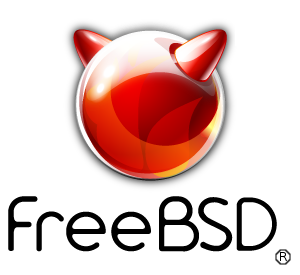freebsdrocks.net was started originally as nospam.mine.nu.
We will first want to download FreeBSD directly from FTP using the following URL:
ftp://ftp.freebsd.org/pub/FreeBSD/releases/ISO-IMAGES/11.2/
There are a few choices in the list. I would grab the FreeBSD-11.2-RELEASE-amd64-dvd1.iso
It is up to you how you install the media whether you burn it and install on a PC or install via ESXi or any other means of installing a virtual machine. I run FreeBSD 11.2 on a vm on ESXi.
Once you get the installation started it will ask if you want to Install, Go to a Shell or Live CD. The obvious choice is to click Install.
Next screen is if you want to continue with the defaul keymap. I just click continue.
The next screen is the hostname. Type your hostname as it would appear on your network. On my LAN at home it would be FreeBSD11.home.local
The next screen will give you several options. The only ones that are recommended are what are already selected which is lib32, for 32 bit compatability and also ports.
Click ok at the bottom.
At this point it will ask if you want to use the guided method for partitioning, manual, shell or ZFS. Easiest way to install is via the guided option but FreeBSD recommends using ZFS. Next screen choose entire disk. On the Partition scheme selection I choose MBR for DOS Partitions. Next, you can leave the defaults or choose to edit them. Myself I am still old school so I still like to visually see the /var and /tmp partitions. I would delete the freebsd-ufs and then make 3 new ones:
Hit enter on create and choose the following (the size of the drive will vary depending on your machine drive space. I am using a 50GB drive in total in this example)
Type freebsd-ufs
Size 5GB
Mountpoint /tmp
Type freebsd-ufs
Size 10GB
Mountpoint /var
Type freebsd-ufs
Size * GB
Mountpoint /usr
The * above indicates use the rest of the drive
When you're done with your selections use the right arrow key to go over to finish. it's going to ask you to confirm your changes. Click commit and we're going to have to wait for it to finish.
At this point we are nearly finished. When the install is completed it will jump to the "Change your root password" screen. Type in a HIGHLY secure password. It should be no less than 8 characters and consist of letters, numbers and punctuation. It will ask you to confirm the password twice.
The next screen will ask you to configure your network adapter. Choose the adapter that is shown on the screen and hit enter. The next screen will ask you if you want to use IPv4. Choose Yes or No depending on your network. In most cases DHCP is the most common option. The next screen will ask if you want to configure IPv6 for this interface. Again, This is the most common method so hitting Enter should be ok. The next screen will ask if you want to configure IPv6 which is the next generation of IP addresses. If you have it and you know it click yes. Otherwise if you don't no click No.
The next screen is your Network Configuration screen. Just hit ok.
When asked Is your CMOS Set to UTC? If you're sure your BIOS is set to UTC, hit yes. Otherwise hit no even if you're unsure.
Choose your Country and hit Enter and then choose your closest State/Province and then hit Enter again.
ALMOST DONE! Now it will ask you if you want to configure any other options. See below:
sshd - RECOMMENDED! Don't disable this. This will allow you to ssh into the box remotely
moused - Optional - You can install this if you plan on using X/gnome/KDE/Etc.
ntpd - Optional - You can specify a NTP server to sync time
powerd - Optional - You can use this to adjust CPU frequency dynamically
It will ask you if you want to enable Dumpdev Configuration. I choose No.
The next screen is system hardening. I choose all options and then hit ok or enterIf you want to add users to the system at the time on the next screen click yes. Otherwise click no.
You should now be at the Final Configuration screen. You can change what options are in this screen or you can just hit Enter to exit. It will then ask you if you want to do any manual configuration before rebooting. I just click no. It will ask you to confirm if you really want to exit and the system will then reboot.
Congrats! You now have FreeBSD installed!
